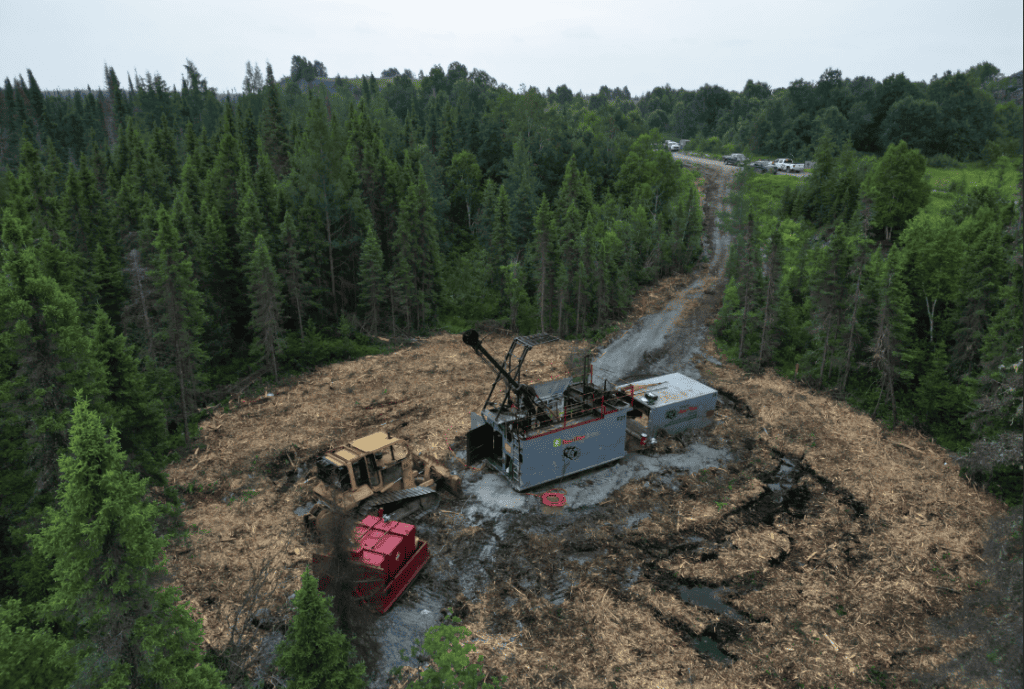Quebec-based Lafleur Minerals is positioning itself for a strategic advantage in the Val-d’Or gold mining district with its fully permitted processing facility and expanding resource base. The company’s ready-to-restart mill, combined with its growing Swanson gold project, creates a unique business model in one of Canada’s most productive gold regions.
The company’s cornerstone asset is the Beacon Mill, a 500-750 ton per day gold processing facility that requires just $5-
...
Quebec-based Lafleur Minerals is positioning itself for a strategic advantage in the Val-d’Or gold mining district with its fully permitted processing facility and expanding resource base. The company’s ready-to-restart mill, combined with its growing Swanson gold project, creates a unique business model in one of Canada’s most productive gold regions.
The company’s cornerstone asset is the Beacon Mill, a 500-750 ton per day gold processing facility that requires just $5-6 million to restart operations. Located near Val-d’Or in Quebec’s Abitibi gold belt, the mill maintains all necessary permits, including tailings areas, and can achieve gold recovery rates exceeding 97%.
“Everything’s there… Maybe there’s some pipes to change but I can’t see it as a big issue right at this point,” explains Technical Adviser Jean Lafleur, highlighting the facility’s operational readiness.
This processing infrastructure provides Lafleur Minerals with a distinct competitive advantage rarely seen among junior mining companies. While most exploration firms face years of permitting and hundreds of millions in construction costs to build production facilities, Lafleur’s mill eliminates these typical barriers to becoming a producer.
Complementing its processing capabilities, the company has significantly expanded its Swanson gold project, located north of Val-d’Or. Under Lafleur’s guidance, the property has grown to five to six times its original size, creating a comprehensive exploration package that now encompasses multiple geological trends characteristic of the region’s productive orogenic gold systems.
“We see that it’s over 2 kilometers long. Even if we get 0.5-1 million ounces, I think it’s favorable for us,” Lafleur notes regarding the deposit’s potential. Recent drilling has confirmed mineralization continuity over significant distances, with both classic quartz vein systems and sulfide components typical of Val-d’Or deposits.
The current gold price environment, with gold trading above $3,600 per ounce, significantly enhances the economics of the company’s strategy. These record prices have transformed previously marginal deposits into economically viable operations, particularly for companies with existing infrastructure.
Lafleur’s business model leverages its mill ownership to create unique acquisition opportunities within a 100-kilometer radius of the processing facility. The company has identified between 50 and 100 potential projects in the area that would be sub-economic for competitors without processing infrastructure.
“We don’t necessarily have to wait 10-20 years before getting this thing mined because it’s smaller. It’s near the surface. An open pit would be ideal,” Lafleur explains, highlighting the advantage of targeting deposits that might be overlooked by major producers seeking multi-million-ounce discoveries.
The mill-centric approach offers multiple revenue streams beyond developing company-owned deposits. Toll milling arrangements with neighboring properties provide immediate cash flow opportunities while proving the mill’s operational capabilities.
“100,000 ounces is probably sufficient for a 2-year operation. So you find a bunch of those and you can add up to 10 years,” Lafleur calculates, explaining how the company can build sustainable production through incremental resource additions rather than requiring singular large-scale discoveries.
The Val-d’Or mining district provides additional advantages through its established infrastructure, experienced workforce, and regional mining services. This well-developed mining ecosystem reduces operational risks and costs typically associated with more remote projects.
Lafleur Minerals’ operational flexibility extends to its metallurgical testing capabilities. The company can conduct bulk sampling using its own mill, enabling rapid feasibility assessments without relying on external facilities or lengthy testing protocols.
Jean Lafleur’s extensive experience in the Val-d’Or camp brings critical technical expertise to resource evaluation and development. His regional geological knowledge facilitates efficient target identification and optimization of drilling programs.
“Having the mill there just opens up so many doors, and over time, like in the next three years, I think there’ll be other opportunities coming in,” Lafleur predicts, pointing to the strategic value of processing infrastructure in consolidating smaller deposits in the region.
As Quebec’s gold mining sector experiences renewed interest amid record gold prices, Lafleur Minerals stands positioned to capitalize on the favorable environment through its operational mill and strategic focus on near-surface deposits in the established Val-d’Or camp. This approach addresses a key challenge facing junior miners: access to processing capacity without the capital intensity and permitting risks of new mill construction.



5 Comments
This sounds like a smart play in the Val-d’Or district. Any major competitors operating in the area?
Lafleur Minerals seems to have a strong position with its ready-to-operate mill. How close is the Swanson project to production?
A $5M restart is relatively cheap for a gold mill. Any update on their funding situation?
97% recovery rates are impressive. Wonder if they plan to expand capacity beyond 750 tons per day.
Restarting a permitted mill in Quebec is a big advantage. Hope they have strong ESG practices in place.